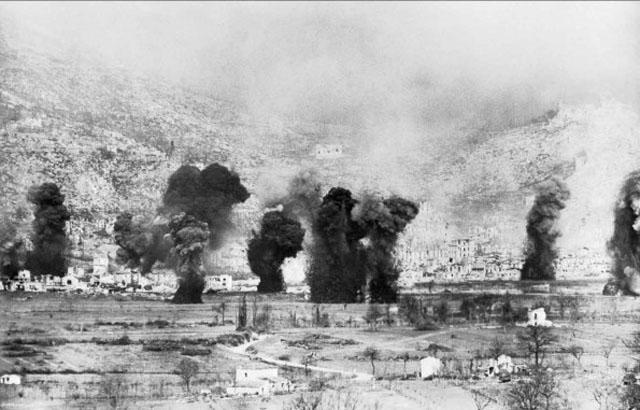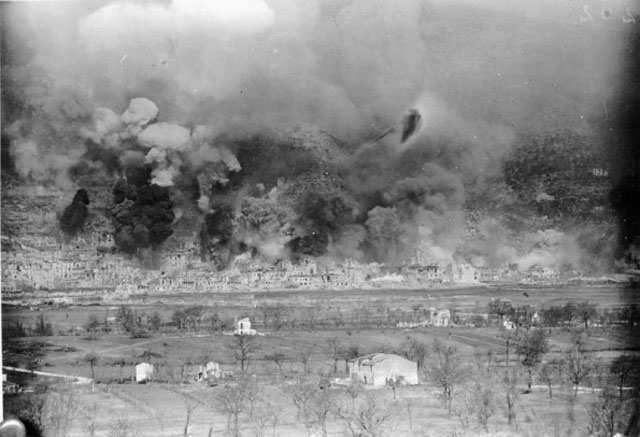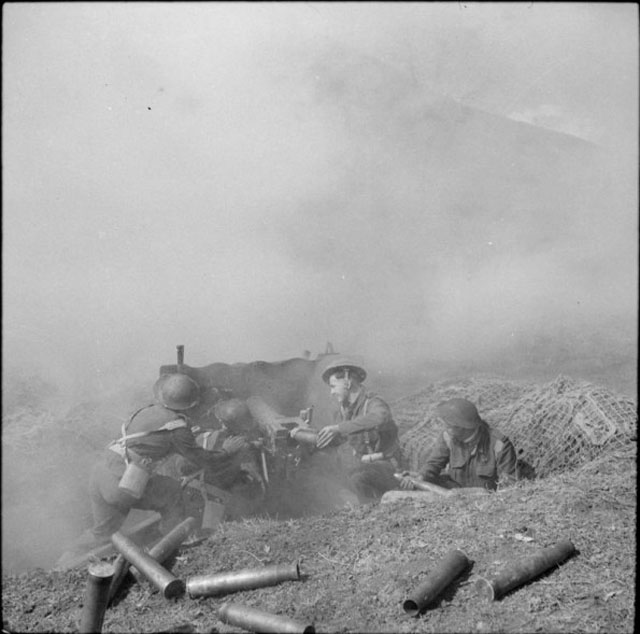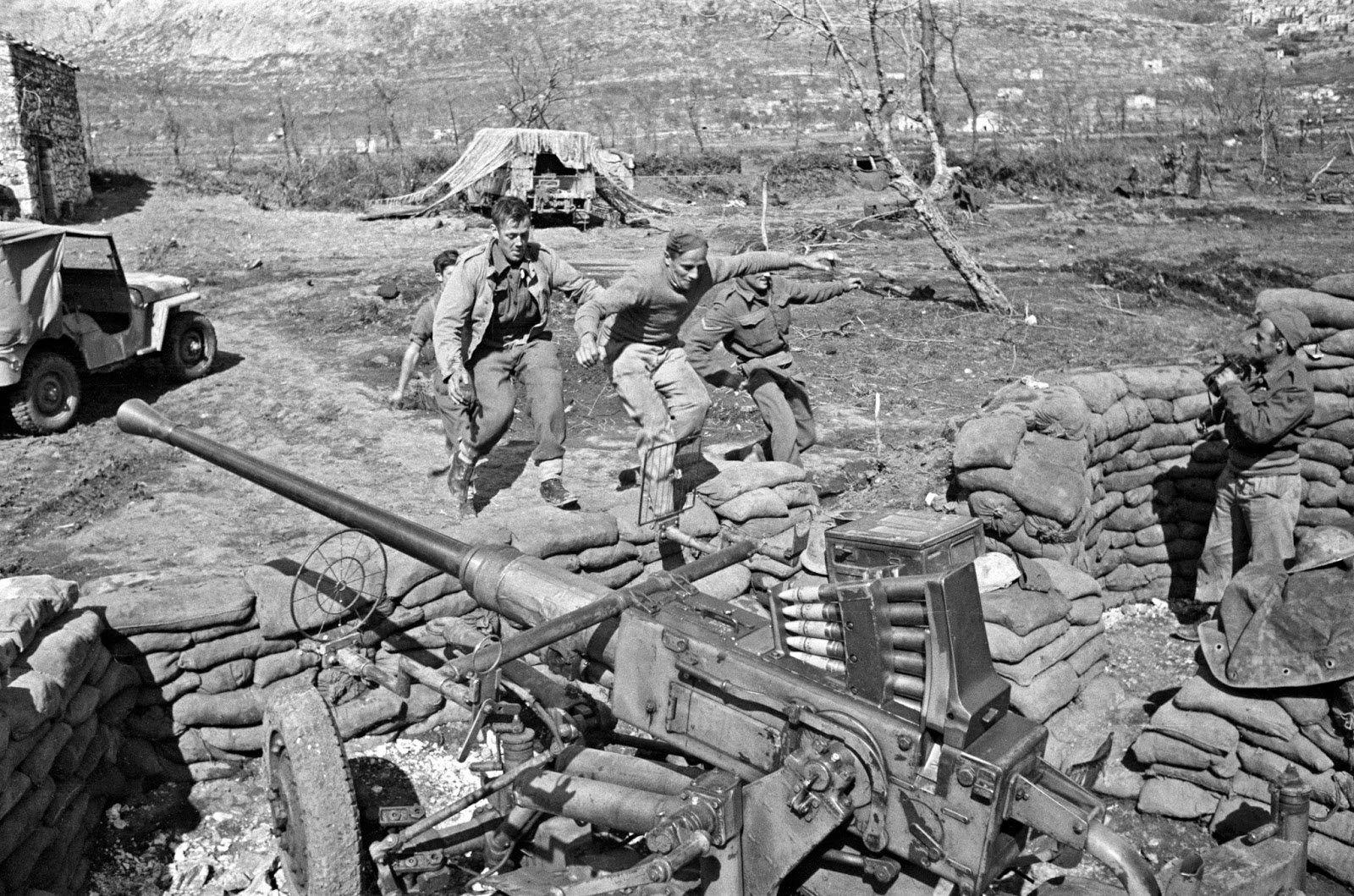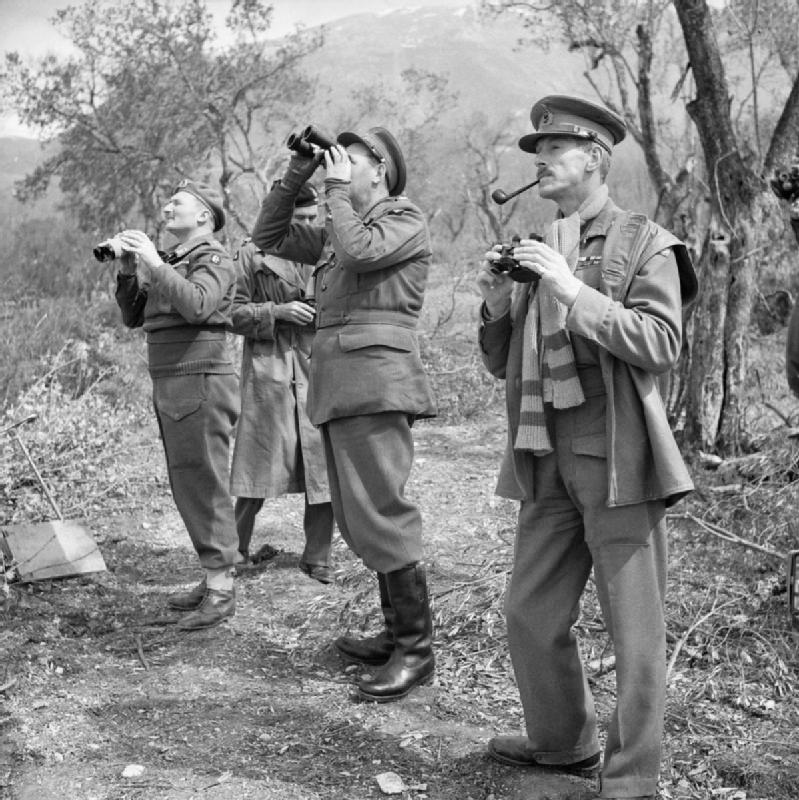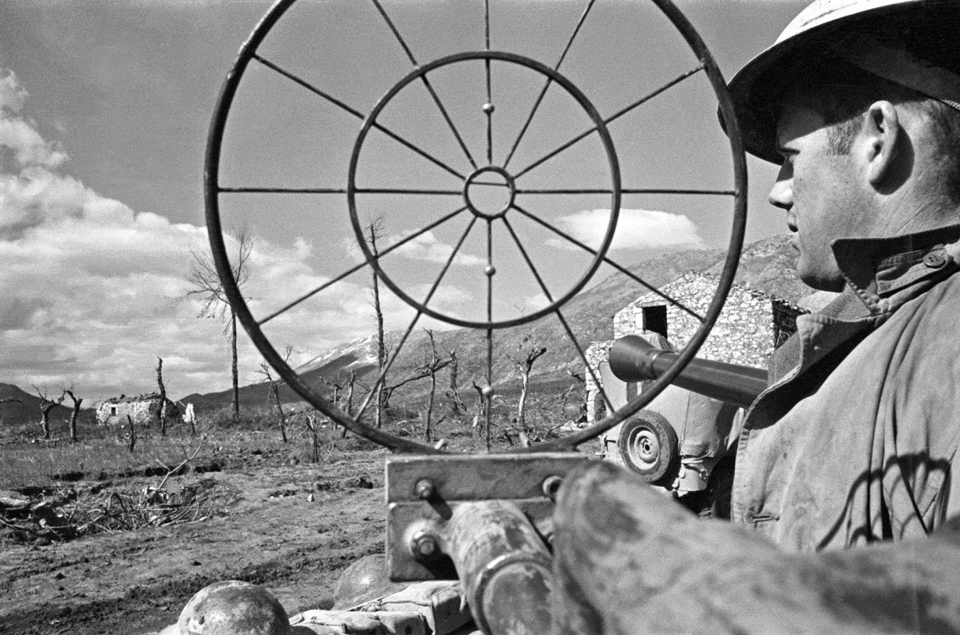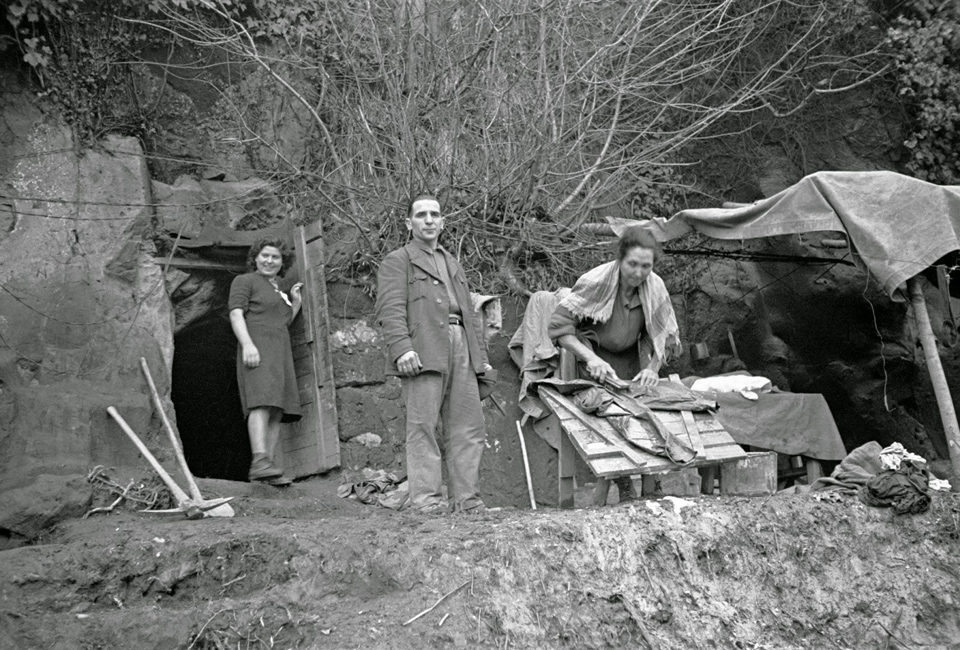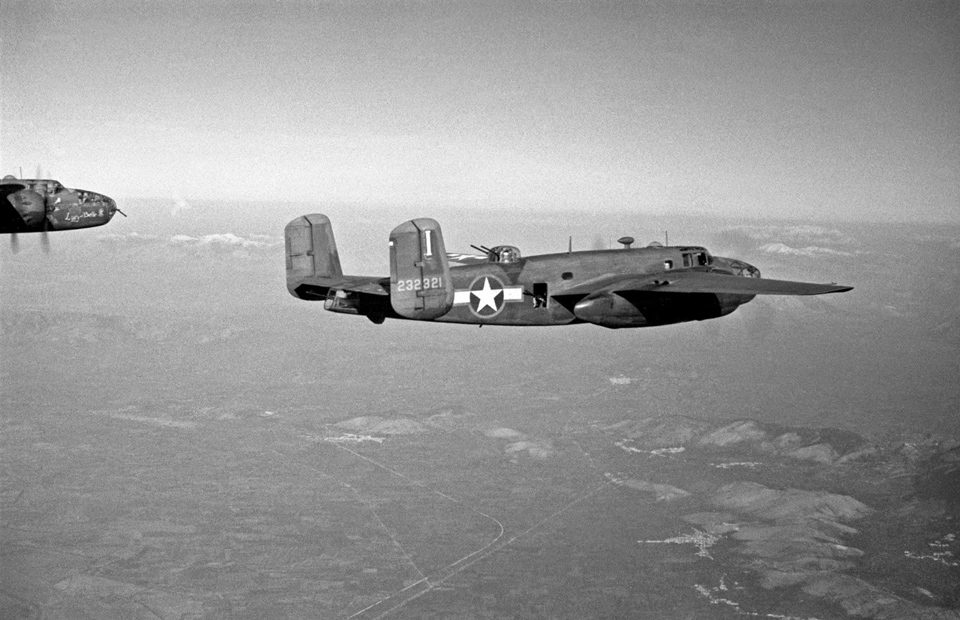Admiralty Islands
After the usual bombardment by aircraft, ships and artillery units of 7th and 8th Cav Regts or the 1st Cav Div are landed on the north coast of Manus Island near Lugos Mission. They take this village and advance toward Lorengau by 2 routes, one along the coast and the other inland. On Los Negros Island units of the 5th Cav advance to the west in the southern part of the island. By taking the Admiralty Islands, the US will further isolate Japanese forces in New Britain and New Guinea.
[Air Operations, Bismarcks
A VMF-222 F4U downs an A6M2-N 'Rufe' float plane over New Ireland at 1730 hours.
[Air Operations, CBI
BURMA- 31 7th Heavy Bomb Group B-24s and more than 20 RAF Wellingtons and Beaufighters attack dumps and targets of opportunity around Rangoon. 24 10th Air Force A-31s and RAF aircraft attack Japanese Army ground positions in the Arakan coastal region. 10th Air Force fighters and fighter-bombers attack a broad range of targets throughout Burma.
- 8t 7th Heavy Bomb Group B-24s attack a barracks near Bangkok.
Air Operations, Europe
RAF BOMBER COMMANDEvening Ops:
- 863 aircraft are sent to bomb Stuttgart. In this total are 617 Lancasters, 230 Halifaxes and 16 Mosquitos.
- The bomber force flies over France nearly as far as the Swiss border before turning northeast for the approach to Stuttgart. This tactic delays the German fighters from contacting the bomber stream until just before the target is reached. Many air combats ensue. Adverse winds delay the opening of the attack and the same winds may have caused the Pathfinder marking to fall back well short of the target, despite the clear weather conditions. Some of the early bombing hits the center of Stuttgart but most falls in the open country southwest of the city. The Akademie is damaged in the center of Stuttgart and some houses are destroyed in the southwest suburbs.
- 27 Lancasters and 10 Halifaxes are lost.
- 140 aircraft including 94 Halifaxes, 38 Stirlings and 8 Mosquitos, attack the railway yards at Amiens.
- 2 Halifaxes and 1 Stirling are lost.
- 22 Lancasters of No. 5 Group are sent to an aircraft engine factory at Woippy, near Metz. Bombing is abandoned because of heavy cloud cover.
- There are no losses.
- 17 Mosquitos are sent to 5 German targets and 10 to airfields in Holland, there are 2 RCM sorties, 11 Serrate patrols and 18 OTU sorties, 2 Stirlings lay mines off Trexel, and 31 aircraft are on Resistance operations.
- 1 Serrate Mosquito is lost.
- Allied bombers obliterate Cassino town, dropping 1,107 tons of bombs.
GERMANY:
- 185 3rd Bomb Division B-17s and 145 2nd Division B-24s attack aircraft-industry targets in Brunswick.
- Escort and support for the heavy bombers is provided by 588 USAAF P-38s and P-47s, including 86 from the 9th Air Force. Escort pilots down 35 Luftwaffe fighters over Germany between 1015 and 1230 hours.
- 5 fighters are lost with their pilots
- As part of a test to increase the effectiveness of the P-47 as a fighter-bomber, 2 353rd Fighter Group P-47s equipped with 2 1,000-pound bombs apiece attack a barge in the Zuider Zee.
BELGIUM:
- 118 IX Bomber Command B-26s attack the Chievres Airdrome and the marshalling yards at two locations.
- In an afternoon test of Oboe guidance equipment turned over by the 8th Air Force, IX Bomber Command B-26s attack the Coxyde Airdrome with poor results.
- During the afternoon, 7 366th Fighter Group P-47s conduct the 9th Air Force's first dive-bombing mission when they attack the St.-Valery-en-Caux Airdrome with one 250-pound bomb apiece.
ITALY:
- In the largest air operation in the theater to date, more than 1,000 Allied warplanes level Monte Cassino monastery and nearby German Army defensive positions with 1,200 tons of bombs. The 12th and 15th Air Forces provide 275 heavy bombers and nearly 200 medium bombers, which drob more than 2,000 1,000-pound bombs. Although the Benedictine monastery is completely demolished, the ground attack fails.
- Although no official start date is ever set, Allied warplanes in Italy effectively commence Operation STRANGLE, the aerial interdiction of the suppliy network in use by German Army forces in Italy. The wide-ranging operation will continue into late May and will eventually result in an 80 percent reduction in the German Army's ability to supply its combat divisions in Italy.
Air Operations, New Guinea
- More than 200 5th Air Force B-24s, B-25s, A-20s, P-38s, P-40s, and P-47s attack numerous targets in and around Wewak.
- In conjunction with a naval and artillery bombardment, 36 345th Medium Bomb Group B-25s organized into several waves attack Japanese Army ground positions on Manus Island as elements of the US 1st Cavalry Division mount their invasion of the island from neighboring Los Negros Island. Hereafter, nearly all ground-support missions in the Admiralty Islands will be undertaken by RAAF P-40s and, from the last week of March, RAAF Spitfires.
- 8th Fighter Group P-38s, 35th Fighter Group P-47s, and 49th Fighter Group P-40s down 9 Japanese fighters over the Wewak area between 1015 and 1115 hours.
- During the night, 2 Japanese bombers mount an ineffective attack against Gusap. One of the bombers is shot down.
Air Operations, Solomons
Japanese Army ground forces renew their attack against the Piva Uncle and Piva Yoke airfields on Bougainville, but US Army ground forces are able to retake lost ground with the aid of more than 50 combat sorties by AirSols bombers and fighters.
[Battle of the Atlantic
Aircraft from the British escort carrier Vindex makes contact with U-653. British sloops Starling, Magpie and Wild Goose are dispatched to the area. After Starling's first ten-charge pattern, underwater explosions are heard and wreckage appears on the surface.
| Class | Type VIIC |
| CO | Oberleutnant zur See Hans-Albrecht Kandlet |
| Location | N Atlantic |
| Cause | Depth charge |
| Casualties | 51 |
| Survivors | None |
Bougainville
After two days of nearly continuous artillery barrages and company-size raids, the Japanese abandon South Knob on Hill 260, leaving behind over 560 dead. The Americal Division's casualties mount to over 700.
The Japanese renew their attacks against the 129th Infantry Regimen's defensive line, again attacking toward Piva airfield, make a little progress, and then are drive back by an American counterattack with tank support. The Cape Torokina beachhead in Empress Augusta Bay is not endangered, but it is certainly less secure than it was a week after the landing.
[CBI
BURMAIn the northeast the Chinese 22nd Division, with the 64th and 66th Regiments in the assault, supported by the 1st Provisional Tank Group advance to within 3 miles of Jambu Bum Ridge. The main effort of the Japanese offensive begins in the northwest with crossings of the Chindwin by 15th and 31st Divisions in several places north of Tamu and south of Homalin. The Indian Army forces are at a disadvantage. Farther to the north, the Japanese 31st Division begins a three-pronged assault toward Kohima.
[Eastern Front
Konev's forces have quickly crossed the Bug and now capture Vapnyarka cutting the Odessa-Zhmerinka rail line. Farther north near Vinnitsa Kalinkova falls to the Russians.
At this date the very long German front in the Soviet Union stretches from the Barents Sea, across Finland to Karelia; from the south shore of the Gulf of Finland, along the Narva and Lake Peipus, to the south, west of Vitebsk and Mogilev; then south, buttressed by the Pripet marshes, enters Poland and turns southeastward, following the line of the Bug, except for the salient recently opened by the Russians west of Uman, and down to the Black Sea west of Kherson. The German 17th Army has for some time been cut off in the Crimea. Thus the Wehrmacht has been driven back all the way to the line it held at the beginning of 1941, a few days after the invasion.
German troops mass along the Hungarian border, preparing to occupy the territory of their shaky ally.
SOUTHERN SECTORThe 6th Tank Army breaks out from its Bug bridgehead and takes Vapnyarka. Other elements of the front cut the railway line between Odessa and Zhmerinka near Vinnitsa.
[Italy
Once more the Allied forces attack Cassino. The massive preliminary bombardment, lasting 5-1/2 hours, 1,400 tons of bombs from planes and 190,000 shells, is mostly directed against Cassino town. The New Zealand 2nd Division moves in to attack the town at 1530 with Indian 4th Division ready to follow up against the monastery. The advance of the Allied tanks is hampered by the mass of rubble created by the bombardment. The German defenders are very tenacious and well directed, but nevertheless some gains are made by the attacks in the town and on the lower slopes of the mountain at Castle Hill and Hangman's Hill.
Meanwhile the Allies are preparing Operation STRANGLE, aimed at 'strangling' enemy movements in their rear areas so as to prevent supplies from reaching the front. With the return of fine weather British and American aircraft bomb and machine-gun streets, bridges, railways and stations and every form of transport used by the enemy behind the lines; all this in addition to the normal bombing of towns and factories in central north Italy. The Germans are only able to move by night, so that very few reinforcments and supplies can reach the front line.
[Solomons
The Japanese make another abortive effort against the American positions on Bougainville.
[Images from March 15, 1944
|
|
|
|
|
|
|
|
|
|
